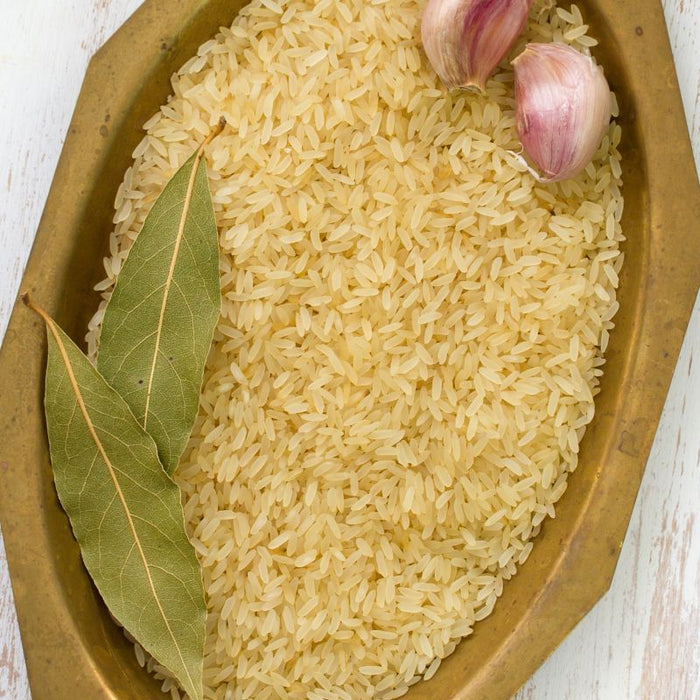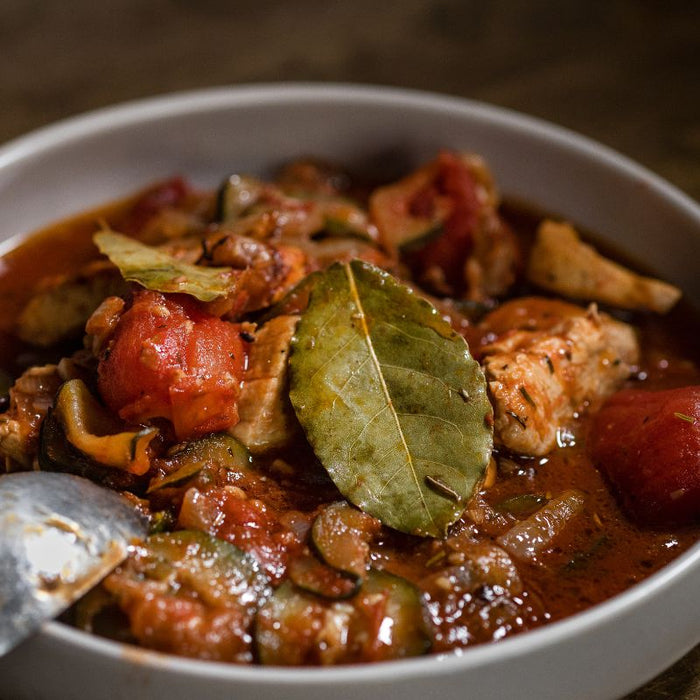
Fresh Bay Leaves - 10g
Bay leaves are commonly used as a herb to add flavor to various dishes. They have a distinct aroma and a slightly bitter taste. Fresh bay leaves are typically dark green in color and have a glossy appearance.
They are often used in soups, stews, sauces, and marinades to enhance the flavor of the dish. It's important to note that fresh bay leaves should be removed from the dish before serving, as they are not meant to be eaten.
How to cook with fresh bay leaves?
When cooking with fresh bay leaves, it's important to remember that they are used primarily for flavoring and are not meant to be eaten. Here are some tips on how to cook with fresh bay leaves:
1. Selecting and preparing: Choose fresh bay leaves that are vibrant green and free from any signs of wilting or discoloration. Before using, rinse the leaves under cold water to remove any dirt or debris.
2. Infusing flavors: Fresh bay leaves are often used to infuse flavors into soups, stews, sauces, and stocks. Add a few whole bay leaves to the pot during cooking, and they will release their aromatic oils, enhancing the flavor of the dish. Remember to remove the bay leaves before serving.
3. Bouquet garni: Fresh bay leaves are commonly included in a bouquet garni, which is a bundle of herbs used to flavor stocks, broths, and sauces. Create a bouquet garni by tying together a few fresh bay leaves, along with other herbs like thyme, parsley, and rosemary, using kitchen twine. Drop the bundle into the pot and remove it before serving.
4. Marinades and brines: Fresh bay leaves can be added to marinades or brines to impart their flavor. You can crush or bruise the leaves slightly before adding them to the liquid to release more of their aroma.
5.Roasting: Fresh bay leaves can be tucked under the skin of poultry or added to the cavity of a roast before cooking. The heat will release their fragrance and subtly infuse the meat with flavor.
Remember that fresh bay leaves are quite strong, so it's important not to use too many in a dish as it can overpower the other flavors. Typically, 1-2 bay leaves are sufficient for most recipes
What are the differences between fresh and dried bay leaves?
The main difference between fresh and dried bay leaves lies in their flavor profile and intensity. Here are some key distinctions:
1. Flavor: Fresh bay leaves have a more subtle and mild flavor compared to dried bay leaves. They offer a slightly herbal and floral taste with hints of bitterness. Dried bay leaves, on the other hand, have a stronger and more concentrated flavor. They are often described as having a stronger eucalyptus-like aroma and a more pronounced herbal taste.
2. Aroma: Fresh bay leaves have a pleasant, aromatic scent, but it is generally milder compared to dried bay leaves. Dried bay leaves have a more potent and robust aroma, which becomes more pronounced when they are heated or crushed.
3. Texture: Fresh bay leaves have a supple texture and are more pliable, making them easy to work with. Dried bay leaves, on the other hand, are brittle and have a crumbly texture. They can break easily when handled, but that doesn't affect their flavor.
4. Usage: Fresh bay leaves are commonly used in recipes where a lighter, more delicate flavor is desired. They work well in dishes that require shorter cooking times or when the bay leaf is meant to impart a subtle aroma. Dried bay leaves are more commonly used in long-simmering dishes, such as soups, stews, and braises, where they have time to release their full flavor.
5. Quantity: Due to their differences in flavor intensity, the quantity of fresh and dried bay leaves needed in a recipe may vary. As a general guideline, you can substitute one fresh bay leaf for two dried bay leaves. However, it's important to adjust the quantity according to personal taste preferences and the specific recipe.
It's worth noting that both fresh and dried bay leaves have their own culinary uses, and the choice between them often depends on the recipe requirements and personal preference.
Are bay leaves low FODMAP?
Both fresh and dried bay leaves are considered low FODMAP (Fermentable Oligosaccharides, Disaccharides, Monosaccharides, and Polyols) ingredients.
FODMAPs are a group of carbohydrates that can trigger digestive symptoms in some individuals, particularly those with irritable bowel syndrome (IBS).
Bay leaves themselves are low in FODMAPs, containing minimal amounts of fermentable carbohydrates. However, it's important to note that bay leaves are typically used in small quantities for flavoring purposes and are not consumed in large amounts. As a result, the FODMAP content of bay leaves is not typically a concern.
If you are following a low FODMAP diet, using fresh or dried bay leaves in your cooking should generally be well-tolerated. However, everyone's tolerance to FODMAPs can vary, so it's advisable to monitor your own individual response and consult with a registered dietitian or healthcare professional for personalized dietary guidance.
Product of U.S.A.















